Ancient Mesopotamian astrologers devised a seven day week inspired by the heavenly bodies that wandered about the sky. There were seven in total. The equally sized flashlight and nightlight in the sky, the sun and moon, along with the other five wandering orbs of light thus form the basis of this alchemical cosmology.
The word planet comes from the Greek planētēs, meaning “wanderer”. So by definition the Sun and Moon were considered planets to the Ancients.
Of the days that are not named directly after the seven planets, their name is derived from the Norse Gods associated with the respective planet. The origin of Sunday is of course from the Sun in the sky. Of the seven known metals, the Sun has always represented gold, irrespective of time and place.
Monday or more properly, ‘Moon-day’, is known as Lunes in Spanish, and dies Lunae in Italian. (lunar space craft, lunar eclipse). The Moon has always been associated with silver. The word ‘month’ and ‘menstruation’ also have etymological roots in the Moon, in addition to having cyclical intervals of about 28 days.
The atomic mass of silver is about the number of moons -stacked side by side- that it would take to fill the space between the two cosmic bodies, roughly speaking.
Tuesday comes from Old English “Tīwesdæg,” after Tiw, or Tyr, a one-handed Norse god of dueling. He is associated with Mars, the Roman war god and also the Greek War God Ares. In other languages, the etymology of the days of the week is less occult(hidden). Whereas in English, we disguise Tuesday through Friday with the Germanic and Norse Gods, in many other languages they are named after the planets directly. Tuesday, or “Marsday” is martes in Spanish, and dies Martis in latin.
Wednesday is “Wōden’s day.” Wōden, or Odin, was the ruler of the Norse gods’ realm and associated with wisdom, magic, victory and death. The Romans connected Wōden to Mercury because they were both guides of souls after death. “Wednesday” comes from Old English “Wōdnesdæg.” Hermes Trismegistus is also long associated with Mercury.
Thursday, “Thor’s day,” gets its English name after the hammer-wielding Norse god of thunder, strength and protection. The Roman god Jupiter, as well as being the king of gods, was the god of the sky and thunder. “Thursday” comes from Old English “Þūnresdæg.” Thursday is Torsdag in Swedish, and jeudi in french.
Friday is named after the wife of Odin. Some scholars say her name was Frigg; others say it was Freya; other scholars say Frigg and Freya were two separate goddesses. Whatever her name, she was often associated with Venus, the Roman goddess of love, beauty and fertility. “Friday” comes from Old English “Frīgedæg.” In Spanish Friday is Viernes, and in Portuguese, Vernes.
Saturday comes from the Anglo-Saxon word “Sæturnesdæg,” which translates to “Saturn’s day.” Sabado in Spanish, and dies Saturni in latin. Lead is Saturn’s alchemical metal.
There are seven clearly visible wandering heavenly bodies, and they may be arranged around a heptagon in order of their apparent speed against the fixed stars. The Moon appears to move fastest, followed by Mercury, Venus, the Sun, Mars, Jupiter, and Saturn. Planets were assigned to days, still clear in many languages, and the order of the days was given by the primary heptagram shown. – John Martineau: A Little Book of Coincidence
- The days of the week are labeled in green. Start with the Sun and follow the green arrow around the heptagram to get the proper order of the week.
- In red are the heavenly bodies ordered by their apparent speed against the fixed stars. Start with the moon and follow the red arrow.
- The seven planets have long been associated with the seven known metals; Gold, Silver, Iron, Mercury, Tin, Copper, and Lead. Shown in blue, they are arranged in sequence by atomic number. Start with iron(Mars) on the top right with the atomic number of 26 and follow the blue arrows.
- In yellow is the electrical potential of each planet’s associated metal. The faster the planet appears to move in the sky, the better the planet’s metal conducts electricity. Begin with lead on the bottom right and follow the yellow arrows around the heptagon.
- Isn’t it amazing how all of these ‘circuits’ simultaneously work in tandem with each other?
“We see then that planetary movement is metamorphosed into the properties of earthly metals” -Rudolf Hauschka 20th Century anthroposophist and inventor
‘The orbital motion of the planet correlates in sequence with its corresponding metal’s conductivity… The slower a planet moves, the less able its corresponding metal is to conduct electricity!’ -Dr Frank McGillion
“He learned chemistry, that starry science” -Moffat’s biography of Sir Philip Sydney
From antiquity up until the mid-eighteenth century, the number of metals known and recognised as such was seven. They were: lead, tin, iron, gold, copper, mercury and silver. …Belief in a linkage of these seven metals with the ‘seven planets’ reaches back into prehistory: there was no age in which silver was not associated with the Moon, nor gold with the Sun. These links defined the identities of the metals. Iron, used always for instruments of war, was associated with Mars, the soft, pliable metal copper was linked with Venus, and the chameleon metal mercury had the same name as its planet. Then, around the beginning of the 18th century these old, cosmic imaginations were swept away by the emerging science of chemistry. The characters of the metals were no longer explained in terms of their cosmic origins but instead in terms of an underlying atomic structure. New metals started to be discovered which made the old view appear limited. –Nick Kollerstrom
Men are from Mars & Women are from Venus
The two standard sex symbols denoting male ♂ and female ♀ are derived from astrological symbols from the planets Mars and Venus which represent iron and copper respectively.
The two signs, planets, days, and metals sit diametrically opposed to each other at 10 and 2 o’clock on the heptagon above. Woman and Man. Venus and Mars, Friday and Tuesday. Copper and iron. The Norse and Germanic equivalents, Freya and Tiw, are also of course female and male.
Women are from Venus because Venus is associated with copper. Women have about 20% higher copper serum in their blood than men. Men have about 33% more iron in their blood than women. Of course Mars is associated with iron, the brute and rustic metal, and as the axiom goes, that’s where men come from.
The deep significance of this fact is entirely ignored by modern medicine. Iron and copper levels are sex-linked in exactly the way expected from the gender symbolism of their planets. The level of copper in human blood is critical, being around one part per million by weight, and normally it remains fairly steady around this value.
Copper in women’s blood serum has a monthly cycle in tune with their menstrual period, peaking a week or so before the period arrives. This is because their serum copper exists chiefly as the protein, ‘ceruloplasmin’, whose metabolism is closely linked to the female sex hormone oestrogen. The Pill works by emulating conditions of pregnancy where oestrogen is high, and this has a drastic effect upon serum copper levels. During pregnancy, copper serum in the mother climbs up to double its normal level, reaching 1.9 parts per million. Conversely, iron in foetal blood also increases as the time of birth approaches, so a copper-iron polarity develops between mother and child. Insomnia, depression and changeable moods towards the end of pregnancy have been related to the raised copper levels. A woman taking the Pill has blocked off her monthly rhythm of serum copper, and instead retains a permanently high level corresponding to the ninth month of pregnancy. Evidence suggests that copper has a dynamic role in the reproductive process, rather than just being a by-product of the raised oestrogen.
In the early 1970s it was discovered that coil contraceptives using copper were much more successful than previous coil designs. The ‘copper-7’ coil became the most popular design and was marketed world-wide, used chiefly by women who have already had one child. Despite intensive research however, no-one had any idea as to the mechanism whereby copper in the coil helped prevent conception. Copper ions have a biological action on the inside of the uterus, preventing implantation of the fertilised ovum. Its modus operandi is thus quite unconnected with that of the Pill, where overall blood serum levels are raised. The sole connection is that in both situations a striking Venus-quality is shown by copper’s behavior.
Having compared copper and iron in the blood, let’s compare them in other aspects – as their two planets are nearest to us, one within Earth’s orbit and the other outside it. Pure copper is a metal of reddish-pink hue, and has a warm, beneficial glow which contrasts with the cold glint of steel. With something made out of iron one may feel ‘how strong’ or ‘how useful’, whereas with something made out of copper, the first impression is more aesthetic. Whether it is a copper bowl, a trumpet, or a green-domed copper roof, it is the visual appearance rather than the utility of the metal which first strikes one. It is such a soft and pliable metal that it needs to be alloyed with other metals, into brass or bronze, before it can be used for a structural purpose.
He who knows what iron is, knows the attributes of Mars.
He who knows Mars, knows the qualities of iron. -Paracelsus
The above illustration is from the multi-book Quadrivium, which includes A Little Book of Coincidence in the Solar System by John Martineau
The Order of the Planets
The Order of the Days by Eyevolution Smith
https://www.youtube.com/watch?v=R3dZBCC0fYk&t=296s
Transcript from the video above:
A normal everyday week, SEVEN DAYS.
What are the seven days of the week? Let us begin with the day of Sunday, named of course after that great luminary, the Sun. Next of course we have the day of Monday, named after the Earth’s only satellite, the moon.
Next in our order of the days is Tuesday, named after the Norse God Tui or Tio, an equivalent of the Roman god Mars, whose symbol represents the day.
Next is Wednesday, or Odin’s day, named after Odin, the Norse equivalent of the god Mercury, followed by Thursday named after Thor, the Norse equivalent of the god Jupiter. Then of course is Friday, named after Freya, the Norse equivalent of the Roman goddess Venus. And last but by no means least we have Saturday, named of course after the ringed planet Saturn.
-The days that make up our normal everyday week-
Have you ever asked yourself the question; why are the seven days named after gods and goddesses and planets of the solar system in that particular order?
What possible order are these weekdays arranged in? The order of the days does not match up to the corresponding order of the planets in our solar system, the planetary heliocentric order.
The heliocentric order of the planets from the Sun outward is as follows; We have of course at the innermost position the Sun, followed by Mercury, then Venus, then the Earth’s moon, then Mars then Jupiter, and then Saturn which would give us a curious weekday order of; Sunday Wednesday Friday Monday Tuesday Thursday then Saturday, and quite clearly this is not the order of the days.
So the order of the days is not thus because of the heliocentric order of the planets they are named after. Are they named after another planetary order perhaps?; the order from the earth in a center outward, or the geocentric order of the ancients..
The geocentric order of the planets is as follows: First we have the moon, then Mercury then Venus then the Sun then Mars then Jupiter and then Saturn. And again this is very clearly not the order of the days.
The planets which represent the day names, placed in this geocentric arrangement, give us a weekday order of Monday Wednesday Friday Sunday Tuesday Thursday and Saturday, a long way off our everyday order of the days.
So, why are the weekdays ordered in this way if not after the heliocentric or geocentric planetary orders? Does the answer lie elsewhere? Do the weekday’s planetary names and symbols suggests that we delve into the occult for our answer perhaps?
Let us work around that long worshipped luminary, the Sun and the freemasonic solar doctrine. It is often said by freemasonic occultists that the Sun is the glory in the center, and that it stands between those two infamous Solomonic pillars, Boaz and Jachin.
According to free Masonic legend Albert Pike, Boaz and Jachin correspond to the two astrological entities Capricorn and Cancer, which are respectively ruled by the astrological planets Saturn and the Moon.
Placing Saturn and the Moon at either side of the Sun -in keeping with Albert Pike suggestion- instantly gives us a partially correct order of the days Saturday Sunday and Moon day.
Adding the rest of the planetary symbols around our freemasonically suggested addition of Boaz and Jachin -beside the glory in the center of the Sun- gives us our correctly arranged order of the days: Thursday Friday Saturday Sunday Monday Tuesday and Wednesday.

And what’s more, when the order of the days is arranged in this way, with the Sun, or the glory in the center, a remarkable pattern occurs. Each of the remaining days and their planetary symbols astrologically upholds:
Saturn, ruler of Capricorn opposes the Moon, ruler of Cancer.
Venus, ruler of Libra, opposes Mars, ruler of Aries.
And Jupiter, ruler of Sagittarius, opposes Mercury, ruler of Gemini, giving us a remarkable oppositional pattern whereby Career, ruled by Capricorn, opposes Home ruled by Cancer.
Woman opposes man and the concerns of religion, the spirit, ruled by Sagittarius, opposed the mind, ruled by Gemini -all creating a dualistic system of opposites- which separate the aspects of the self from all the others, in a simplified system of limited possibilities which repeat ad infinitum.
Is all this just coincidence, astrological synchronicity, or the result of more than just a little help from the hidden helping hand…”
-Eyevolution Smith
“The Solstices, Cancer and Capricorn, the two Gates of Heaven, are the two pillars of Hercules, beyond which he, the Sun, never journeyed: and they still appear in our Lodges, as the two great columns, Jachin and Boaz, and also as the two parallel lines that bound the circle, with a point in the centre, emblem of the Sun, between the two tropics of Cancer and Capricorn. -Albert Pike
*Check out Eyevolution’s video series ‘Do You Believe in Magick’
“The ancients counted seven planets, thus arranged: the Moon, Mercury, Venus, the Sun, Mars, Jupiter, and Saturn. There were seven heavens and seven spheres of these planets; on all the monuments of Mithras are seven altars or pyres, consecrated to the seven planets, as were the seven lamps of the golden candelabrum in the Temple. That these represented the planets, we are assured by Clemens of Alexandria, in his Stromata, and by Philo Judaeus.
To return to its source in the Infinite, the human soul, the ancients held, had to ascend, as it had descended, through the seven spheres. The Ladder by which it reascends, has, according to Marsilius Ficinus, in his Commentary on the Ennead of Plotinus, seven degrees or steps; and in the Mysteries of Mithras, carried to Rome under the Emperors, the ladder, with its seven rounds, was a symbol referring to this ascent through the spheres of the seven planets. Jacob saw the Spirits of God ascending and descending on it; and above it the Deity Himself. The Mithraic Mysteries were celebrated in caves, where gates were marked at the four equinoctial and solstitial points of the Zodiac; and the seven planetary spheres were represented, which souls needs must traverse in descending from the heaven of the fixed stars to the elements that envelop the earth; and seven gates were marked, one for each planet, through which they pass, in descending or returning.
We learn this from Celsus, in Origen, who says that the symbolic image of this passage among the stars, used in the Mithraic Mysteries, was a ladder reaching from earth to Heaven, divided into seven steps or stages, to each of which was a gate, and at the summit an eighth one, that of the fixed stars. The symbol was the same as that of the seven stages of Borsippa, the Pyramid of vitrified brick, near Babylon, built of seven stages, and each of a different colour. In the Mithraic ceremonies, the candidate went through seven stages of initiation, passing through many fearful trials–and of these the high ladder with seven rounds or steps was the symbol.” – Albert Pike, Morals and Dogma pg.10
Boaz and Jachin were two copper, brass or bronze pillars which flanked the entrance of Solomon’s Temple. They are said to represent the Sun and Moon, but there is also a masonic interpretation. Albert Pike pointed out they represent Cancer and Capricorn, which are respectively ruled by the Moon and Saturn. Since they are positioned at north and south (like the twin towers in New York), the Sun passes east to west in between them.
So we have, in order, Boaz(Saturnday), Sun(Sunday), and Jachin(Moonday). Filling in to the right of the Moon is Mars (Tiw’s day), and Mercury (Wooden’s Day or Wednesday). To the left of Saturn is Venus(Freya’s Day or Friday) and finally Jupiter(Thor’s day or Thursday).
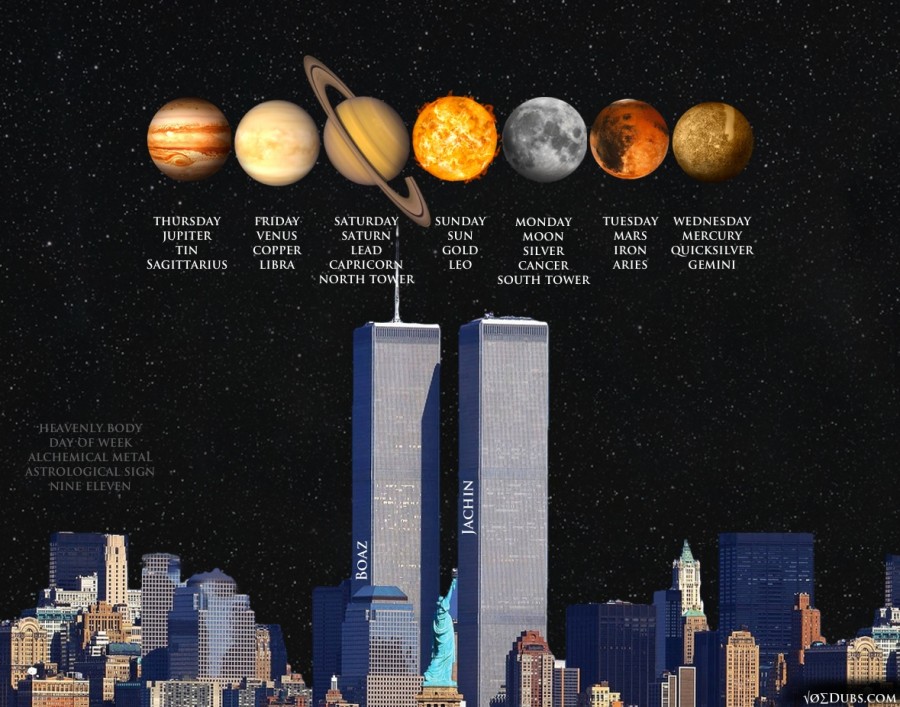
When Boaz is Saturn, and Jachin is the Moon, The Sun passes between them and gives us the proper order of the days of the week

The Planetary Metals found in Hermetic Writings
The Rebis (from the Latin res bina, meaning dual or double matter) is the end product of the alchemical magnum opus or great work. This illustration was found in Heinrich Nollius’ Theoria philosophiae hermetica, 1617. It depicts the Sun and Moon, along with the other five heavenly wanderers.
After one has gone through the stages of putrefaction and purification, separating opposing qualities, those qualities are united once more in what is sometimes described as the divine hermaphrodite, a reconciliation of spirit and matter, a being of both male and female qualities as indicated by the male and female head within a single body. The sun and moon correspond to the male and female halves, just as the Red King and White Queen are similarly associated. The dragon in alchemy represents the prime matter, as well as the third alchemical element sulfur. The winged dragon suggests ascension, a merging of material and spiritual. Fire is a common transformative symbol. -wikipedia
VITRIOL, 1614
This alchemical mandala is used as a teaching device much in the same way Tibetans used yantras. By meditating on this image the initiate brings together in his mind the recipe “VITRIOL”, the symbolic powers of numbers one through seven and many astrological and mythological signs. At the very center of the picture is the face of an alchemist. This places him at the point of totality, the place where things arise and return to his consciousness. One is the symbol of identity. Out of the one issues the archetypal pair of royal opposites: the Solar King of masculine consciousness and the Lunar Queen of feminine consciousness. Each can be seen on either side of the diagram. The King sits on the back of a lion and the Queen is mounted upon a whale or dolphin. The elements of earth and water are shown as the hill beneath the lion and the ocean from which the giant fish emerges. The large, inverted triangle outside the main circle indicates the realms of Body, Soul and Spirit. Body is at the very bottom represented by the cube of earth surrounded by five planets, Soul (anima) is positioned in the upper left hand angle accompanied by an image of the sun, and spirit is in the right angle above a picture of the moon.
Earth and water elements that occupy the bottom corners of the diagram are completed with the salamander, the elemental creature of fire, and a bird symbolizing air in the upper right hand corner. Thus, we have all four elements represented. The alchemist’s body presents us with five elements. His left foot is in the water, his right in the earth element, his left hand holds a feather (indicating air) and his right hand is shown with a torch (fire). Finally, above the alchemist’s face, at the very top of the diagram is a pair of outstretched wings. These represent the ultimate spirit, or quintessence. The number six is found in a combination of two triangles, one drawn directly on the alchemists face and the other as the larger triangle already described in the number three. The inner triangle represents Salt which corresponds to the cube of earth, Sulphur relates to the solar forces and Mercury, in this case, refers to the lunar spirit. –Alchemicalpsychology
Seven Planes of Ptolemy

Planisphaerium Ptolemaicum, Sive Machina Orbium Mundi Et Hypothesi Ptolemaica In Plano Disposita / Cellarius, Andreas, 17th c
More notes on Se7en:
- 7, according to Pythagoras, was the “vehicle” of life. To him, the number seven signified the union of spirit and matter – the union of three (the triple nature of the spirit) combined with the four elements of matter (earth, air, fire, and water)
- 7!, pronounced ‘factorial seven’, is simply 1x2x3x4x5x6x7 which equals 5040, Plato’s favorite number.
- 7 was considered among the Pythagoreans to be the middle ground between the first 10 numbers(the decad) since 1x2x3x4x5x6x7 = 7x8x9x10
- 7 Notes of the musical scale
- 7 Systems of Symbolism – symbolism of numbers, symbolism of geometrical figures, symbolism of letters, symbolism of words, symbolism of magic, symbolism of alchemy, symbolism of astrology.
- 7 Colors and 7 Rays – Red, Orange, Yellow, Green, Blue, Purple, Violet.
- 7 Personality Types – Solar, Lunar, Martial, Mercurial, Jovial, Venusian, Saturnine.
- 7 Arch Angels – Michael, Gabriel, Raphael, Uriel, Chamuel, Jophiel, and Zadkiel.
- 7 Metals – Lead, Tin, Iron, Copper, Mercury, Silver, Gold.
- 7 Chakras – Muladhara, Svadhisthana, Manipura, Anahata, Vishuddha, Ajna, Sahasrara.
- 7 Stages of Alchemy – Calcination, Dissolution, Separation, Conjunction, Fermentation, Distillation, Coagulation.
- 7 Hermetic principles – Mentalism, Correspondence, Vibration, Polarity, Rhythm, Cause and Effect, Gender.
- 7 Spheres
- 7 Root Races
- 7 Days of creation
- 7 steps taken by Buddha at his birth.
- 7 heavens and 7 earths in Islamic tradition.
- 7 worlds in the Hindu universe.
- 7 Seals in the Book of Revelations.
- 7 Virtues in Christianity – Faith, Hope, Charity, Fortitude, Justice, Prudence, Temperance.
- 7 Vices in Christianity – Pride, Envy, Anger, Sloth/dejection, Avarice, Gluttony, Lust.
- 7 Stages of Man – the infant, the school-boy, the lover, the soldier, the judge, the elderly man, the senile one.
- 7 Sciences – grammar, rhetoric, logic, arithmetic, music, geometry, and astronomy – the first three in the Trivium, the remaining four in the Quadrivium.
- 7 Wonders of the World – Pyramids of Egypt, Hanging Gardens of Babylon, Statue of Zeus at Olympia, Temple of Artemis at Ephesus, Mausoleum of King Mausolus at Halicarnassus, Colossus of Rhodes, Pharos Lighthouse at Alexandria.
- 7 Seas – Arctic, Antarctic, North and South Pacific, North and South Atlantic and the Indian Ocean.
- 7 Continents – North America, South America, Africa, Europe, Asia, Australia and Antarctica.
- 7 Seven Sisters of the Pleiades star system.
- 7 Parts to the embryo – Amnion, Chorionic Villi, Spinal Cord, Heart, Brain, Umbilical Cord, Yolk Sac.
- 7 Parts of the body – Head, Thorax, Abdomen, Two Arms, Two Legs.
- 7 Glands – Pineal, Pituitary, Thyroid, Thymus, Adrenal, Lyden and Gonad.
- 7 Divisions to the brain – Cerebrum, Cerebellum, Pons Varolii, Medulla Oblongatta, Corpus Callosum, Spinal Cord, Meninges.
- 7 Parts to the inner ear – Vestibule, Auditory Canal, Tympanic Membrane, Ossicles, Semi-circular Canal, Cochlea, Membranous Labyrinth.
- 7 Parts to the retina – Cornea, Aqueous Humor, Lens, Vitreous Humor, Retina, Sclera, Iris.
- 7 Cavities to the heart – Right and Left Ventricle, Right and Left Atrium, Tricuspid Valve, Mitral Valve, Septum.
- 7 Body systems – Muscular, Skeletal, Nervous, Digestive, Respiratory, Excretory, Circulatory.
- 7 Bodily functions – Respiration, Circulation, Assimilation, Excretion, Reproduction, Sensation, Reaction.
- 7 Levels in the Periodic Table of the Elements.
An introduction to the extraordinary metal-planet relationship experiments of Lili Kolisko, a significant scientific associate of Rudolf Steiner
Lili was one of the great unsung scientists of the 20th century who via decades of crystallization experiments in sync with geocentrically-observed cosmic motions and positions described a qualitative direct relationship between the 7 luminaries of old (Sun, Moon, visible planets) and the 7 noble metals (Gold, Silver, Copper, Tin, etc) as was held as canon in alchemy and ancient mystery schools (i.e. Gold=Sun, Silver=Moon, Copper=Venus, etc).
The experiments described herein reflect Iron-Mars, Silver-Moon, and Lead-Saturn connections.
The Hermetic Axiom “As Above, So Below” has a far more profound interpretation than modern orthodox consciousness allows with its petty materialistic limits. Lili Kolisko ennobles the path to awakening our supersensible consciousness – a definite remedy for the subsensible, sub-material quantum world explanations of orthodox science.
“True Science will lead us to the acknowledgment of spiritual facts. The unison of Science, Art and Religion must come in the near future. Scientists must arise who are at the same time endowed in their souls with the qualities of an artist and a priest. Science must again become a holy Art, if an unholy natural science is not to lead mankind to destruction.” ~ L. Kolisko”
http://kingdomhereamerica.blogspot.com/2016/12/the-weekday-seven-pointed-star.html
Metal Planet Relationships by Nick Kollerstrom
Repeating Ones – Paired Obelisks – Secrets in Plain Sight
The Seven Planets of Hormonal Alchemy by Samael Aun Weor
Planets, Colors and Metals by Patrice Guinard, Ph.D.
Sepharial a Manual of Occultism
Alchemy and Hermeticism Mega PDF Collection



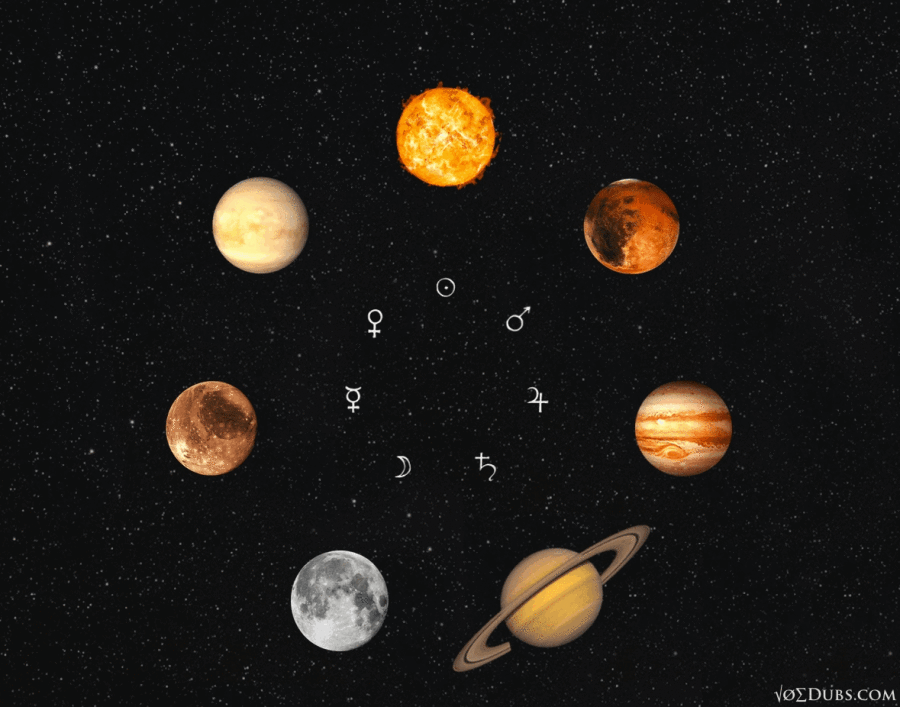


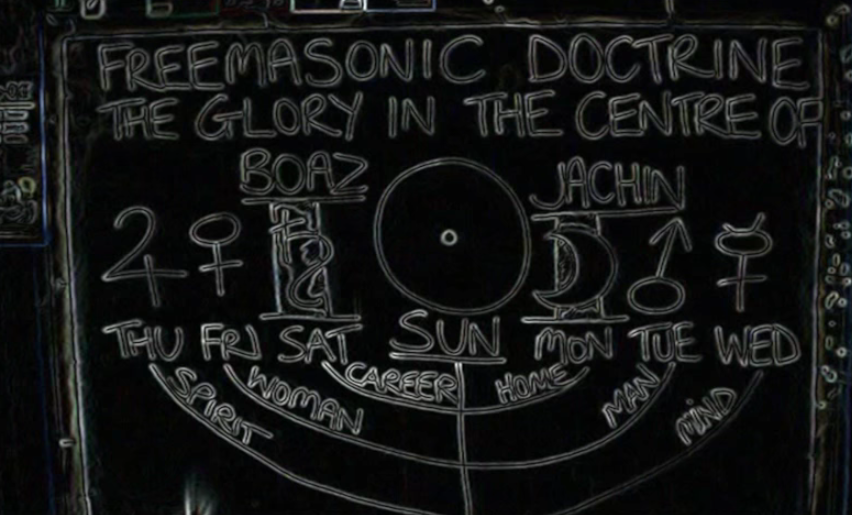

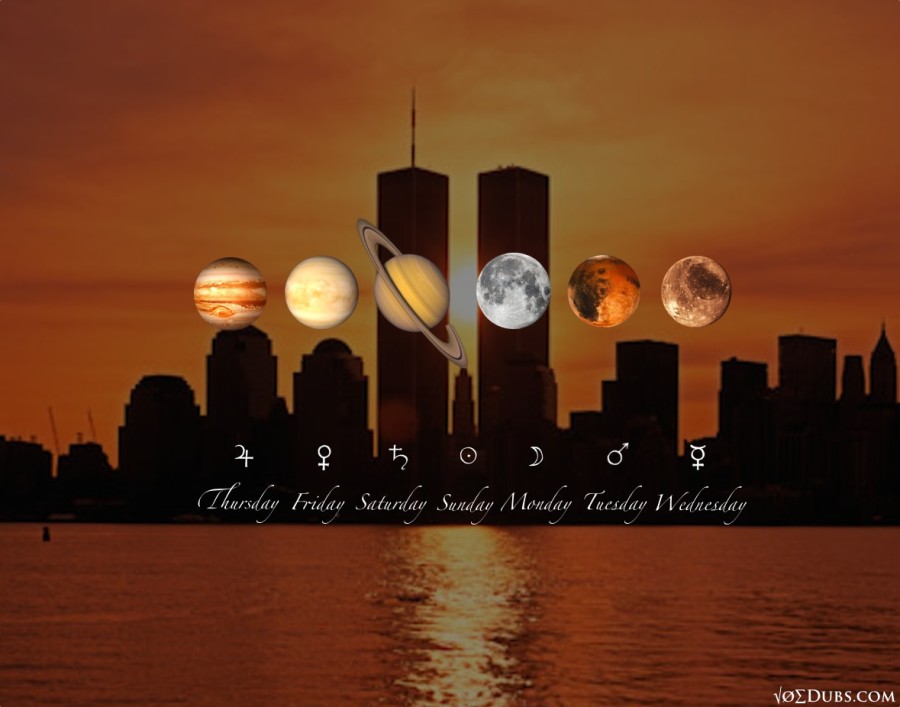

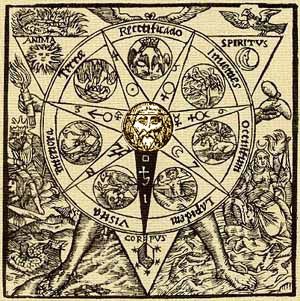
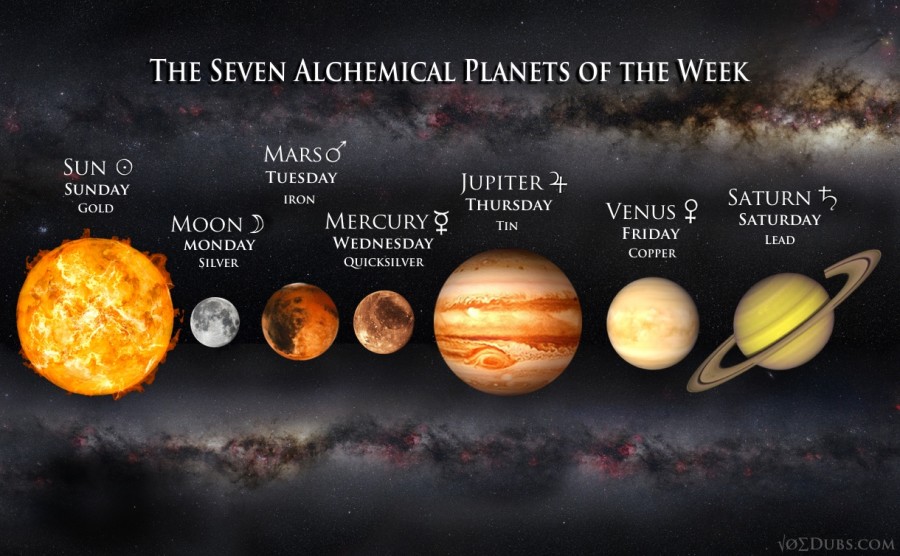
thank you …
One additional comment of the number 7: how about he important link of the 7 Greek vowels and their coorrisponding planets. How would they corrispond alchemically and otherwise.
Pingback: Sedm alchymických kovů a planet náležejících ke každému dni v týdnu – KAMENOVO Syslovo
Seven seas – Caribbean, Red, Dead, Mediterranean, Caspian, Black, & Baltic Seas.
Seven religions – Judaism, Christendom, Islam, Hinduism, Buddhism, Taoism , Marxism.
Seven states – Gas(air), Liquid(water), Solid(earth),Plasma(fire), Photonic(sight), Phonic(sound), Rhythmic(time/pulse).
I’m sure I could keep updating more.
Seven seas – Caribbean, Red, Dead, Mediterranean, Caspian, Black, & Baltic Seas.
Seven religions – Judaism, Christendom, Islam, Hinduism, Buddhism, Taoism , Marxism.
Seven states – Gas(air), Liquid(water), Solid(earth),Plasma(fire), Photonic(sight), Phonic(sound), Rhythmic(time/pulse).